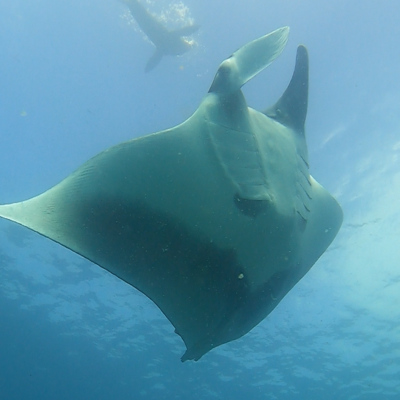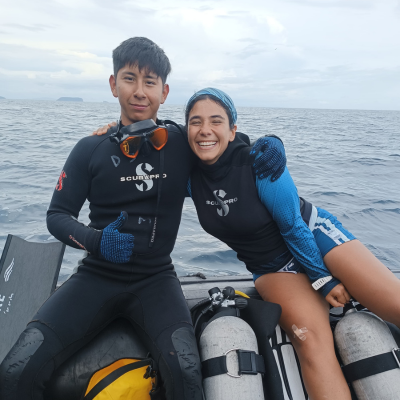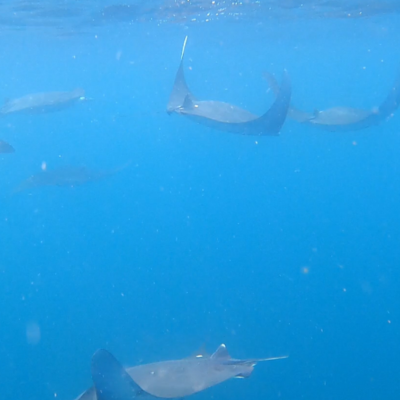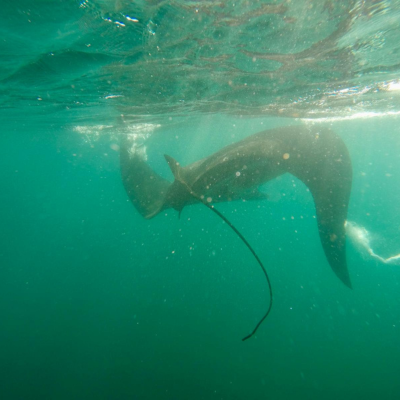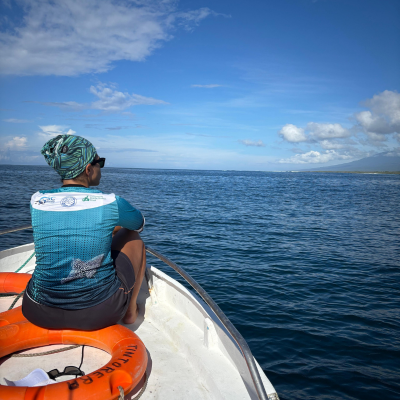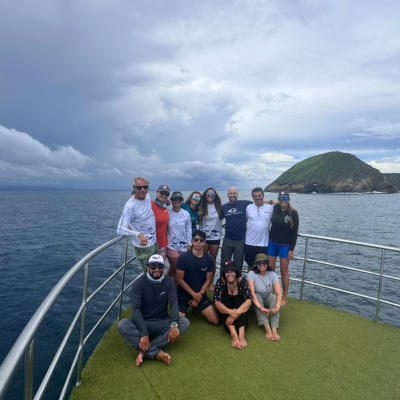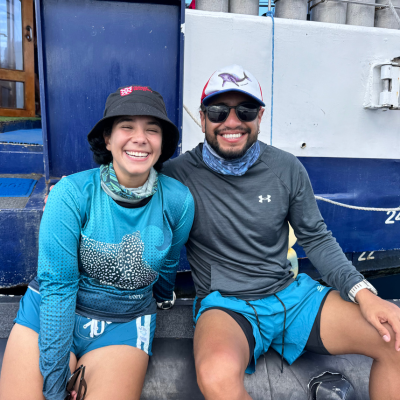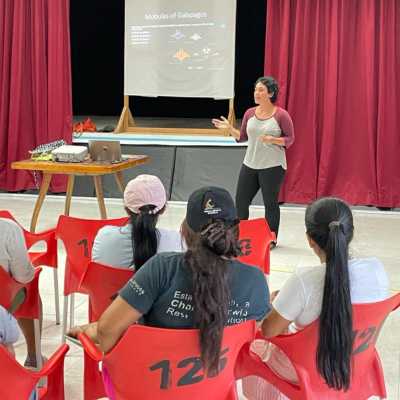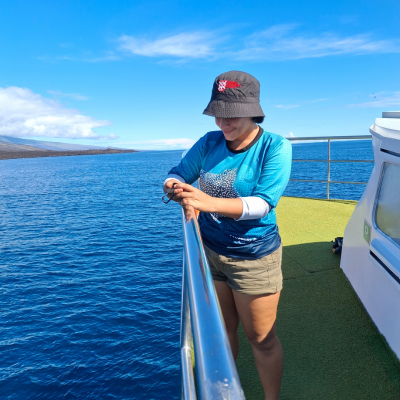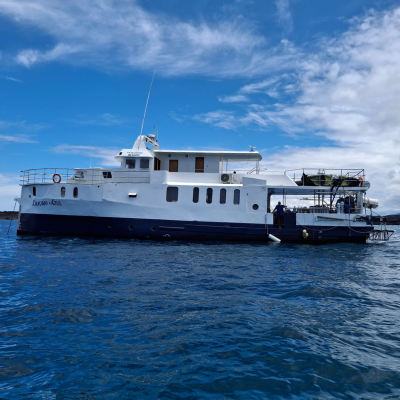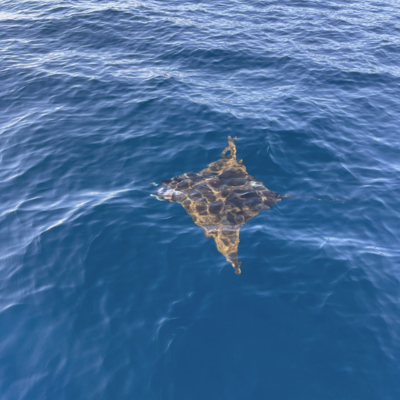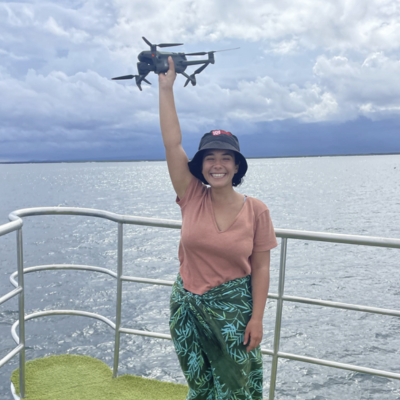Farah Hamdan
Manta Research Expedition in the Galápagos Islands
March 2025
PhD Candidate, and BSc Environmental Management and MSc Ecological Management and Conservation Biology Graduate, Farah Hamdan shares her latest fieldwork experience which aimed to explore how mobula rays can be better protected through science, policy, and local collaboration.
Scientific Expedition Studies Several Megafauna Species in the Galápagos
The Galápagos National Park Directorate (GNPD), in collaboration with the Universidad San Francisco de Quito (USFQ), the Galapagos Science Center (USFQ-GSC), and Proyecto Mantas Ecuador (PME), carried out a scientific expedition in the southern and eastern regions of Isabela Island. Supported by Brookfield Zoo Chicago’s Sarasota Dolphin Research Program, Mote Marine Laboratory, Georgia Aquarium, and the Ocean Tracking Network, the research provided data for at least four different research projects.
The aim of the expedition was to fill knowledge gaps about various species, including commercially important fish and species of tourist interest such as the oceanic manta ray, 4 Mobula ray species, and marine mammals. It was conducted from March 4 to 11, 2025, with the support of the crew of the vessel Danubio Azul. This collaborative effort reaffirms the commitment of DPNG and USFQ to research and conservation of Galápagos marine ecosystems.
To monitor their distribution, and identify potential key habitats and aggregation sites, the GNPD and the scientific team used drones, snorkel, and diving surveys to monitor key areas for the ecology of Mobula mobular, M. munkiana, M. tarapacana, and M. thurstoni. The research confirmed the presence of key aggregations for M. munkiana and M. thurstoni, identified cleaning stations for M. thurstoni, and new distribution data for M. mobular and M. tarapacana.
The expedition was multi-disciplinary, and several other research projects were taking place about the scientific expedition. The GNPD and scientific team deployed 7 satellite tags and 11 acoustic tags on 15 individual oceanic manta rays (Mobula birostris), used drones to monitor key areas. Capture, sampling, tagging, and release methods were also used on grouper (Mycteroperca olfax) to improve understanding of the species’ biology and movements. Genetic samples of sharks, rays, and fish were also collected for population studies. Moreover, photo-identification and sighting records were made to assess the presence and habitat use of cetacean species, and enabled continued tracking of an adult orca (Orcinus orca) that has been recorded in the Galápagos since 2016, contributing key data on its distribution and residency.
After the expedition aboard the Danubio Azul, I spent 1 week in each of Isabela and Santa Cruz islands, working closely with local dive operators and GNPD to further promote Citizen Science efforts and maintain a collaborative and mutually respectful relationship with the local communities of the Galapagos.
This fieldwork was essential. It helped validate years of citizen science data, and provided the opportunity to ground-truth species occurrence models developed through MaxEnt. It also strengthened my collaborations with regional partners and yielded high-quality genetic data that I’ll be analysing throughout my PhD. Perhaps most importantly, the research trip gave me deeper insight into the local socio-ecological context, which is vital for developing sustainable tourism and fisheries strategies.

